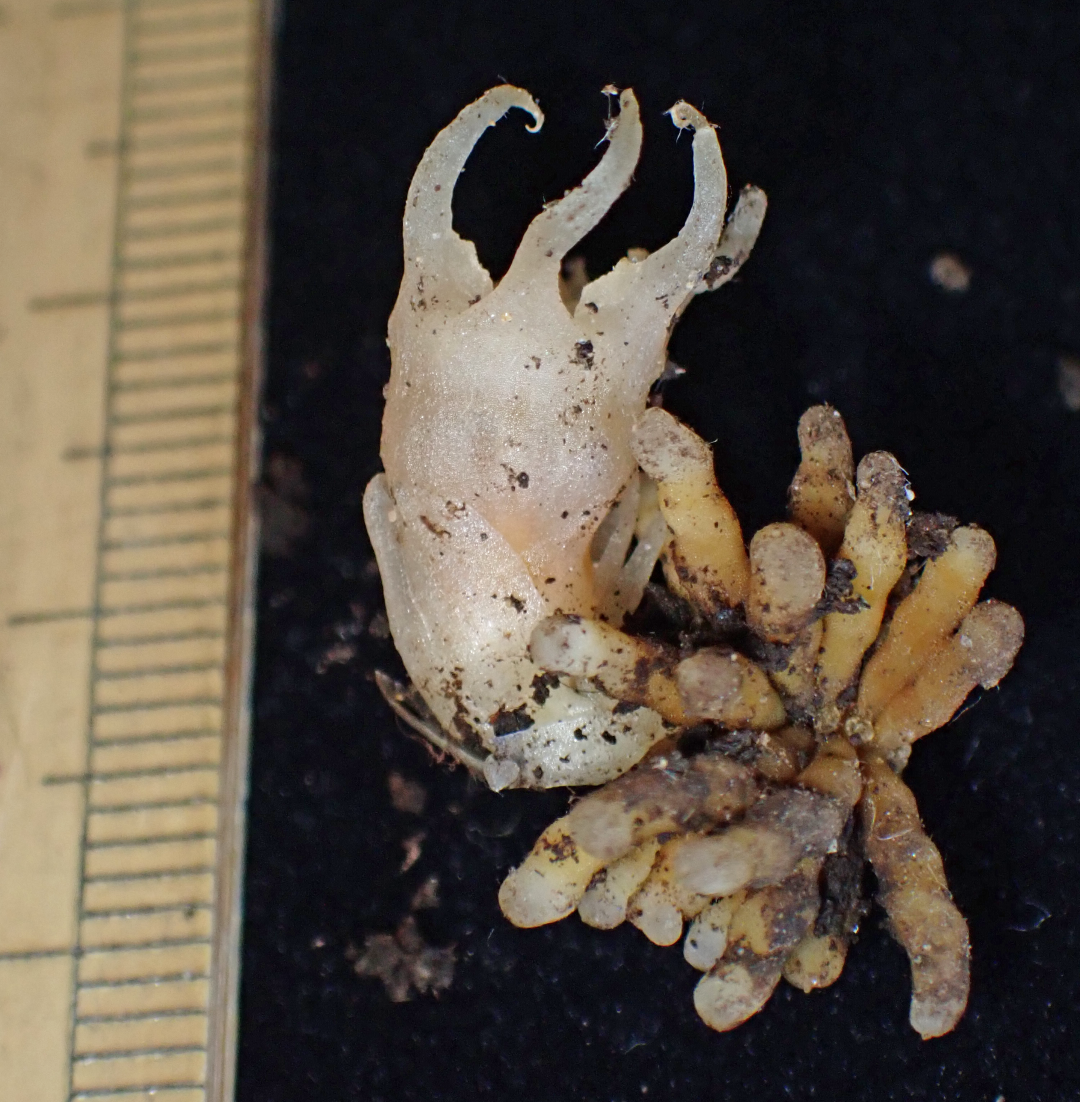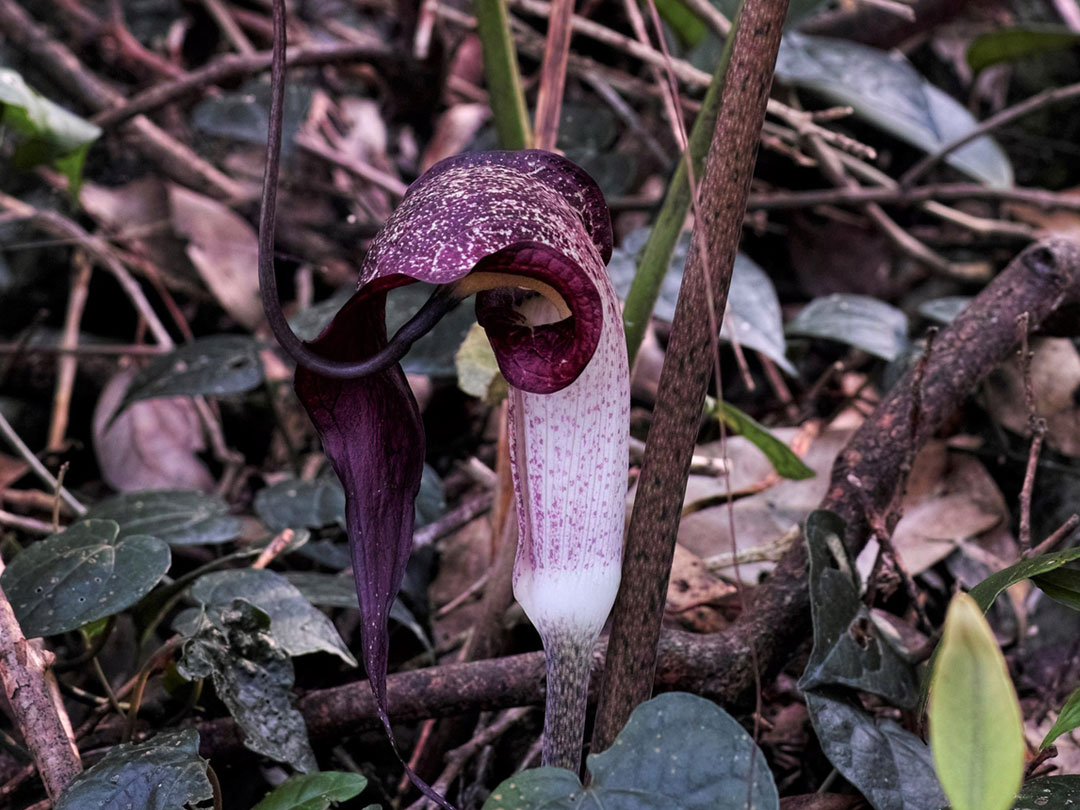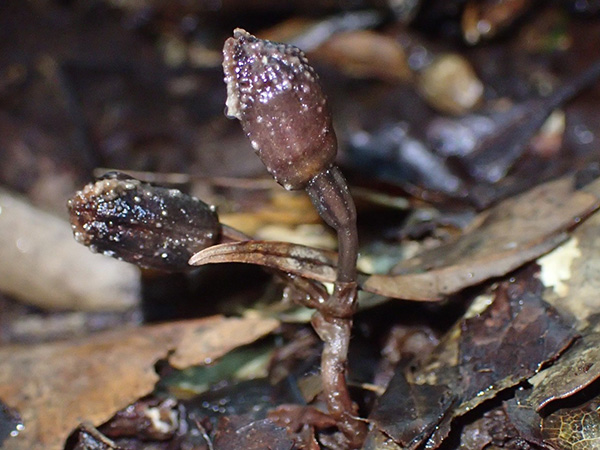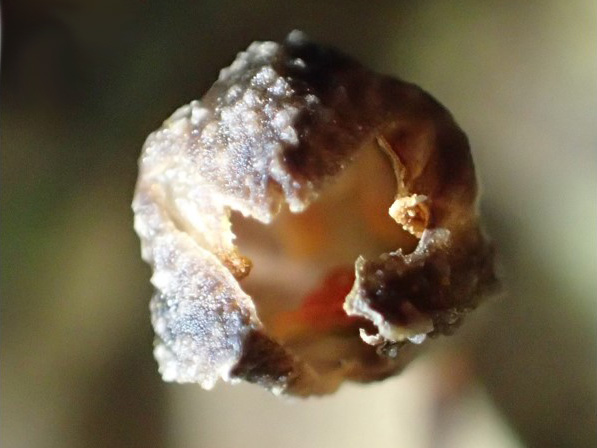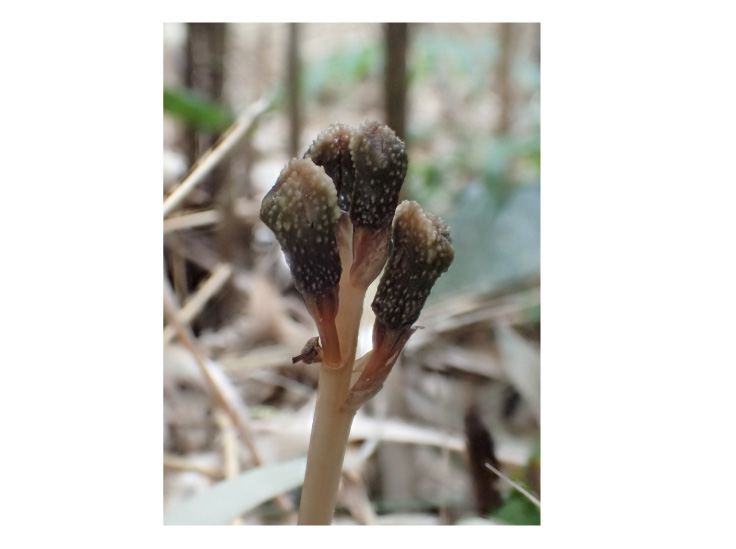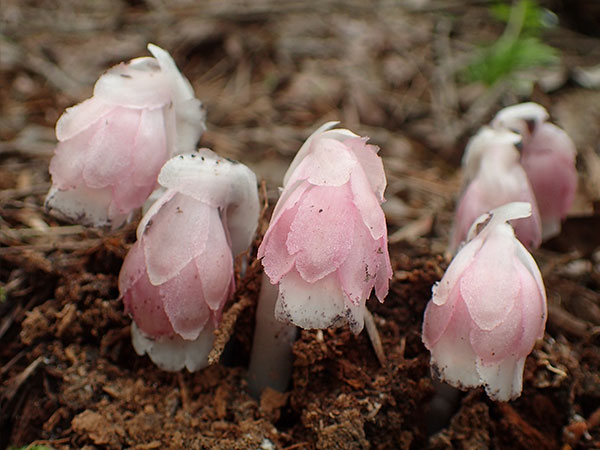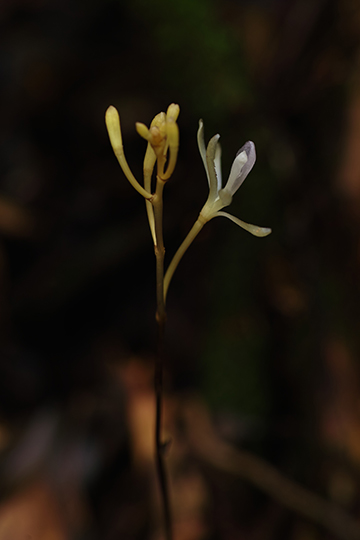
(Credit: Yamashita Hiroaki)
Possessing chlorophyll and engaging in photosynthesis are often given as important defining traits of plants. However, some plant species have abandoned photosynthesis, instead feeding off the roots of host fungi such as mushrooms and mould. These plants are called mycoheterotrophs. Because mycoheterotrophs do not engage in photosynthesis, they only show themselves above ground when fruiting or in flower. Many of them have very short flowering periods and are small in size, making them hard to find and classify.
Project Associate Professor SUETSUGU Kenji (Kobe University Graduate School of Science) is documenting the distribution of mycoheterotrophic plants in Japan. In July 2015, while working with Professor Suetsugu in Yakushima, photographer YAMASHITA Hiroaki discovered an unknown mycoheterotoph of the orchidaceous family in the lowland laurel forests. Professor Suetsugu carried out a detailed examination of the plant’s morphological characteristics with independent plant specialist FUKUNAGA Hirokazu. This revealed that the plant was a close relative of the orchidaceous Lecanorchis amethystea, but clear differences in the inner part of the flower proved it was a new species. The species was named Lecanorchis tabugawaensis and the findings were published in Phytokeys on November 3.
The plant discovered on Yakushima by photographer Yamashita Hiroaki in July 2015 has stalks 20-40cm long, and between July and August each stalk sprouts about five white flowers, each roughly 2cm in size. Its place of discovery and namesake Tabugawa is home to many other endangered plant species such as Lecanorchis virella, Lecanorchis trachycaula, Vexillabium yakushimense, Apostoasia nipponica, Lycopodium sieboldii, and Lysionotus pauciflorus.
Mycoheterotrophic plants exist as parasites within forest ecosystems. In order to thrive, they need a healthy, stable ecosystem with resources to spare. The discovery of mycoheterotrophic species demonstrates that the Tabugawa area is home to a rich ecosystem beneath the forest floor, including a fungal network that cannot be seen by the naked eye.
A number of mycoheterotrophic species have recently been discovered in Yakushima, from Oxygyne yamashitae in 2008, Gastrodia uraiensis in 2015, and this year Sciaphila yakushimensis and Lecanorchis tabugawaensis. These discoveries are evidence of the abundant ecosystems supported by Yakushima’s primeval forests. However, when most people think of Yakushima, their attention is first drawn by the Jomon cedars 500 meters above sea level, and the value of the lowland laurel forests is not widely known. The Tabugawa area where this new endangered species was discovered is not a national park or a world heritage site – it is an unprotected area where logging is permitted. Cedar logging is taking place nearby, and there are concerns that this could dry out the area, changing the mycoflora and creating an inhospitable environment.
Early 20th century Japanese biologist Kumagusu Minakata emphasized that an environment where non-photosynthesizing plants can grow is a sanctuary, and such places should be valued and preserved. The Lecanorchis tabugawaensis hosted by the fungi that live in this ecosystem is further proof of the importance of Yakushima’s lowland laurel forests.
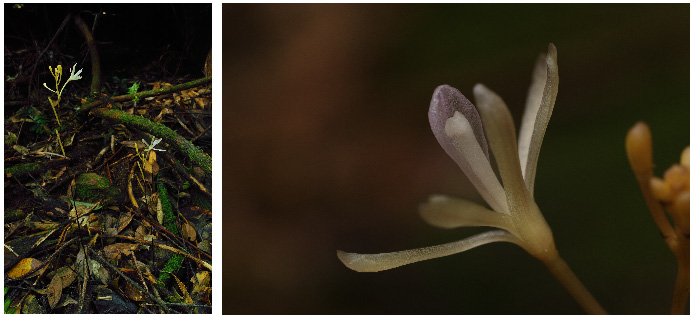
(Credit: Yamashita Hiroaki)
Technical terms
- *Mycoheterotrophic species
- Species which have lost the ability to photosynthesize and take their nutrients from fungi. Approximately 50 of these species have been reported in Japan, including families such as Ericaceae, Polygalaceae, Gentianaceae, Burmanniaceae, Corsiaceae, Liliaceae, Orchidaceae, Petrosaviaceae and Triuridaceae.
Journal information
- Title
- “Lecanorchis tabugawaensis (Orchidaceae, Vanilloideae), a new mycoheterotrophic plant from Yakushima Island, Japan”
- DOI
- 10.3897/phytokeys.73.10019
- Authors
- Suetsugu K, Fukunaga H.
- Journal
- Phytokeys






